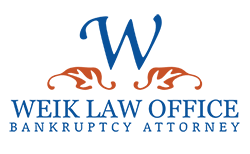GET HELP TODAY
Our website offers a detailed section on this exact question. Please go to the home page and click on “Types of Relief”.
Basically, a Chapter 7 is designed to allow you to wipe-out or eliminate your unsecured bills, such as credit cards, hospital bills, and personal loans. There are certain types of debt that can’t be wiped out. The most common are taxes, child support and student loans. Secured debt, like debt secured by a house or car, can be reaffirmed or kept if you are current on the payments.
Under Chapter 7, an equity analysis is performed to determine your ability to retain certain items when you file. For example, in North Carolina, an individual is allowed to keep a car if the car has less than $3,500 worth of equity. Other exemptions may be available in your case depending on your particular situation.
A Chapter 13 is a consolidation that allows you to set up a plan to pay off your creditors over an extended period of time. Unsecured debt, such as credit cards, hospital bills and personal loans are often paid back at only pennies on the dollar, and interest/penalties that you are paying each month and often eliminated. You are finally able to pay down the balances and you can see the light at the end of the tunnel.
Chapter 13 often lowers the monthly payments on your automobile and other secured debt and usually lowers the interest rate.
Chapter 13 stops foreclosure, repossession, garnishments, lawsuits and all creditor harassment.
When you file for Chapter 13, you are usually able to keep all of your property.
